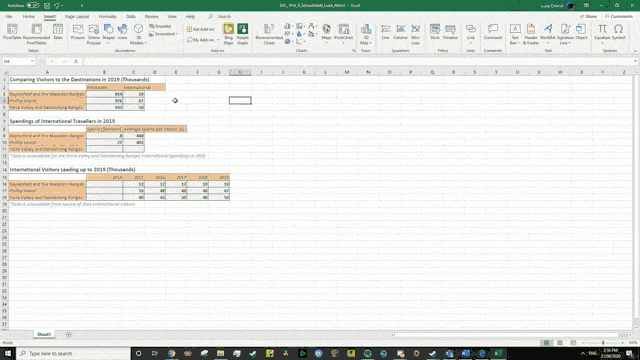That’s it! The management has finally given its approval for the acquisition of a brand new business management software. An ERP.
The great tool that seduced you (we hope it’s Furious😉) should help automate processes between the different divisions, save time on a daily basis, and thus eventually save money.
So you’re getting ready to migrate and there’s a little bit of impatience and anxiety:
How can we ensure that this strategic migration for the company goes smoothly?
Because we know the pressure that this can represent and the potential dangers, at Furious we guide our clients step by step, for as long as it takes.
And we can already list the 10 most common mistakes to avoid during a migration:
Forget to ask yourself why you change tools.
It may sound obvious when you put it like that, but it’s important to take a good look at what’s already there before starting any changes. Some of our clients start from almost zero: a few Excels and no real tools. Others are already familiar with single-task tools (CRM, project management) that do not necessarily communicate with each other. Still others have already reached maturity in using a competing ERP and are not satisfied with it.
In all cases, as an ERP is a transversal tool by definition, it is essential to gather the needs and constraints of the teams that will be using it. but above all to define the objectives of this migration. Have you identified the “pain points” you wish to resolve and defined an evaluation chart?
Do not appoint a manager for this migration project
Changing the tool at the core of the company’s operations involves all employees.
The success of this internal project – which is so strategic – requires a coordinator who will act as a link between the various divisions and departments.
In the same way that a project manager makes it possible to coordinate all the people working on the successful completion of it, an intermediary between the software teams and yours is a prerequisite for the success of your migration.
Not everyone can be responsible. One of the responsibilities of the person in charge will be to draw up a schedule and to ensure that it is followed.
Assign the project to a trainee
And this manager cannot be a trainee. In the same way that you wouldn’t entrust the biggest budget and project of your company to Corentin-the-trainee, it seems obvious that entrusting him with the migration of the tool that will manage your whole activity is not the best thing to do. Even if you think you’ll be the last one to use it (which is not true, but that’s another subject!).
Corentin may have the best will in the world, but he has neither the experience nor the global vision of the ins and outs of this project and the company. And probably not even the authority to impose change.

Do not involve the management
An ERP like Furious has a wide scope. It concerns and facilitates the work of operational staff, managers, back-office staff, etc. But that’s not all. Besides the operational management of projects and the company, it is also a great management tool. And when you say management, you mean CQFD manager.
The management must therefore be both the leader of change (who is at the helm, a thousand million miles!?) and the stakeholder of change.

On average, we integrate Furious six times faster when management (CEO, CFO, Operations, Sales, etc.) is involved: not only because they set the direction and pace, but also because they understand even more rapidly than the operational staff the incredible benefits that an ERP like Furious can bring to the company: profitable growth, optimisation of workflows and detailed analysis of team and customer satisfaction.
In fact, our best implementations are very often led by a member of the management.
Do not take the opportunity to review the processes
A concrete example that will speak to everyone: when you move house, you take the opportunity to sort, throw away and clean? A change of ERP is the same thing.
It’s the perfect opportunity to rethink the organization, to take stock of what’s working and what’s weighing down the daily routine. In short, review ERP processes, simplify and/or optimize them.
In this way, you’ll quickly find additional added value in this migration.
A good ERP will generally offer you a structure that maximizes best practices.
Trying to replicate exactly what we had in our previous tool(s)
Normally, if you haven’t fallen into pitfall #1, you’ll know how to avoid this one.
But it can happen that despite a real desire to change, despite clear points of improvement and modification, our natural tendency to go towards what we know, what we have mastered (even if sometimes it is anything but logical) interferes with a serene migration.
If you’ve been using Excel since your teenager years, there are chances your new ERP won’t render your KPI’s in quite the same way.

Furious is a recent ERP, and therefore at the peak of usage and technology. By nature, its philosophy is different from ERP tools developed in the 2000s. We will assist you in getting started and you will discover facilities and optimisations that you could never have imagined!
Entrust the project only to your financiers
An ERP system naturally involves the financial service. It therefore he has his word to say.
However, in the same way that you do not rely solely on them for the implementation of agency projects or for the commercial management of your consultancy, Michel-le-DAF and his team cannot be the sole decision-makers and stakeholders in the choice and migration of your ERP.
Good project management is central to Furious, and its extensive scope covers all areas of your business. The modules are interconnected to allow you to manage, anticipate and monitor your projects and the company.
Our feedback from experiences led solely by the financiers does not always result in the best buy-in from the teams (unless, of course, the financier is on the Comex).
Wanting to achieve unanimity
If you have ever organized a company seminar, an end-of-year party or simply a meal with colleagues, you know that it is impossible to fully satisfy everyone.

For an ERP, it’s the same thing. First of all, we are talking about change. But human beings don’t like change (cats don’t either, unnecessary but true information).
According to the internal profiles, their personalities and their struggles with the current tools, you will have more or less resistance. Some will be extremely enthusiastic (and make good ambassadors), while others will be very resistant.
We come back to points 2 and 3: a leader for migration must be the leader of change, and have the necessary authority (see point 4) to convince the most reluctant
Not having mapped his data / his access rights / the recovery process.
Let’s get out of the psychological dimension of migration and get into the practical part.
Moving from one tool (or several tools) to another involves a significant transfer of data: project, customer, employee and financial information, but also of who has access to what.
The migration manager must be able to retrieve all the data, both from the current provider and from the managers.
For information, all the data in your Furious belongs to you. It can be exported at any time by authorised people in the company without any additional cost.
And as part of your migration to our tool, our teams will assist you in importing your data and helping you to configure and customise your Furious. Again, free of charge and without any time limit.
Do you have a clear idea of where your data is? Who should or shouldn’t have access to this or that information? We very often have long hours of discussions with clients here to cross-check those details.
Do not impose a migration schedule and methodology on yourself.
It has been said over and over again: this is a strategic project for your company.
And every project needs a plan, because “If one does not know to which port one is sailing, no wind is favorable.”
Framing the migration in a schedule makes it possible to set the right objectives in terms of timing.
We obviously adapt it to each stage At Furious, we offer our clients a clear and proven deployment plan. We obviously adapt it to each stage, but this allows us to optimise the implementation time. In fact, our deployment time is among the fastest on the market!
We hope that these 10 tips will help you to get through the migration process smoothly and serenely (yes, yes, it is possible, believe us!).
For any question it’s here!